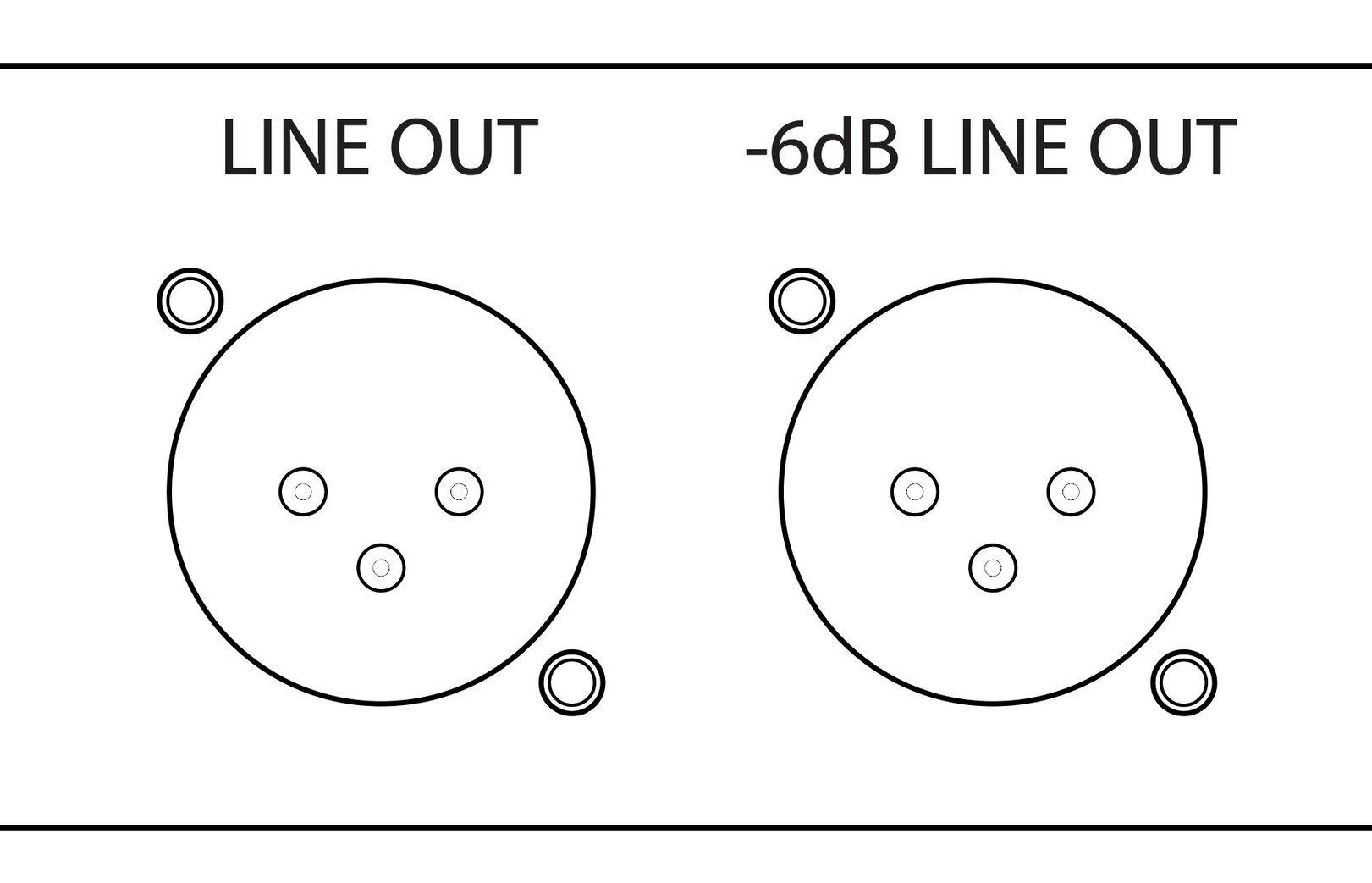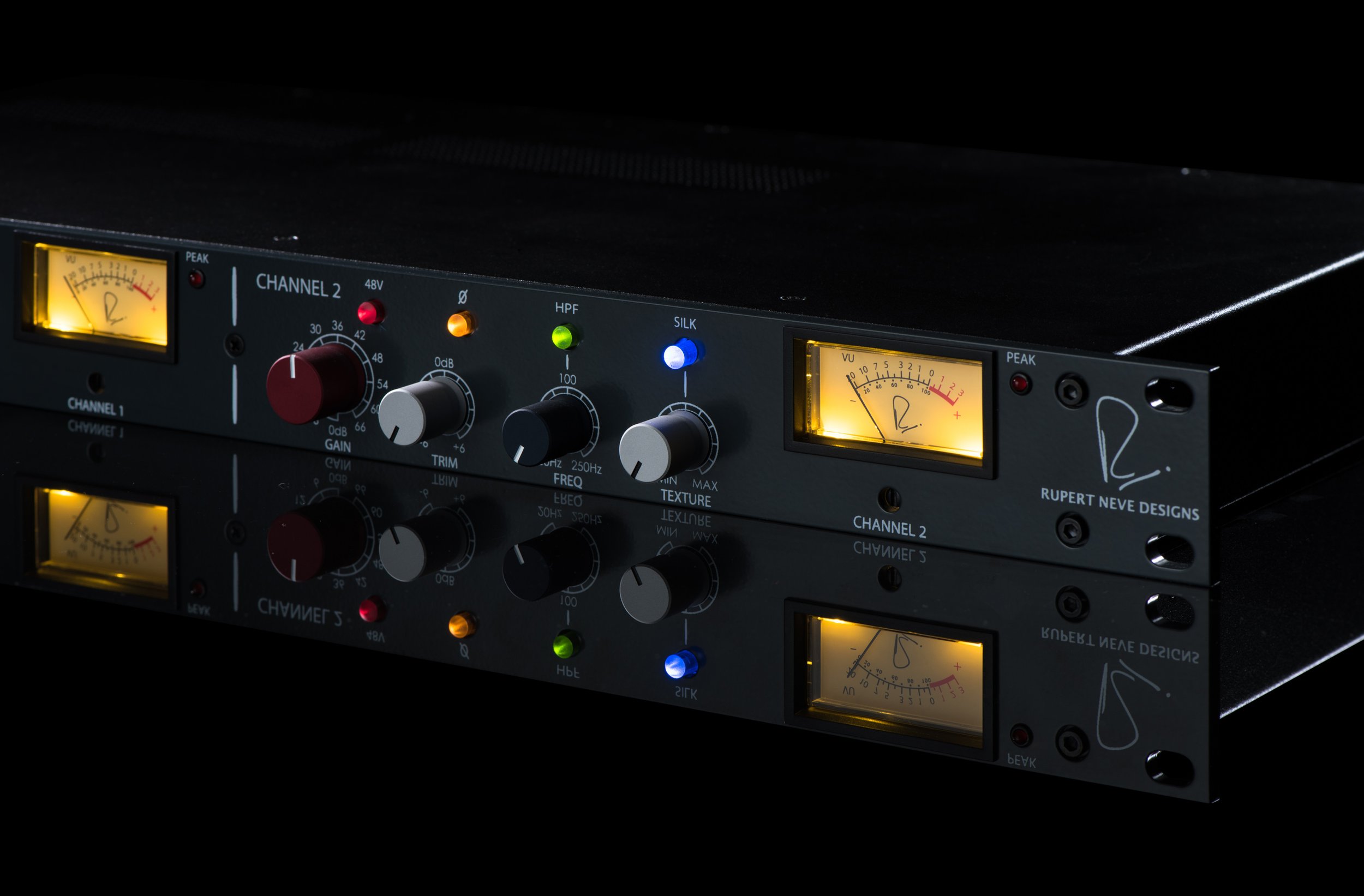
5025
Dual Shelford Mic Pre
OVERVIEW / MEDIA / FEATURES / REVIEWS / SPECS & RESOURCESTwo channels of the finest microphone preamplification in the world.
Our best-selling Shelford Channel is the definitive evolution of the original technologies in Rupert’s classic modules like the 1073, 1064 & 2254, thoughtfully advanced and refined for the 21st century studio.
Originally released as a limited edition and back by popular demand, we are now offering the Dual Shelford Mic Pre: a two-channel version of our flagship preamplifier that has become an indispensable tool for countless engineers and musicians. The Dual Shelford offers the sonic excellence of two Rupert Neve Designs Shelford mic preamps in a single rack space with an internal power supply; simply put, these are two channels of the finest microphone preamplification in the world.

“...after working on a vintage Neve console for 10 years, it’s exciting to hear the Shelford sound like a 1073 is supposed to, but without all the baggage.”
ON THE SHELFORD CHANNEL
Over fifty years in the making, the Shelford mic preamp is the definitive evolution of the original technologies in Rupert’s classic console modules. The 5025 contains two of these preamps in a single rack space.
The Transformer Gain Mic Pre
Like Rupert’s designs from his time in Little Shelford, the Dual Shelford Pre uses a custom step-up transformer on the microphone input that provides the first 15 dB of gain. This specially-designed transformer, along with its careful integration with the surrounding class-A circuitry, is critical to the amplifier’s bold, mid-focused magic that can be heard on thousands of classic recordings.
While the majority of the harmonic richness found in Rupert’s designs is a product of the output transformer and surrounding class-A amplifiers, this step-up input transformer also imparts a unique musical enhancement of its own. The technical reasons for this are primarily a result of the reactive impedance characteristic of the input transformer and how that interacts with the connected microphone, resulting in subtle, non-linear harmonic enhancement of the lows and an unmistakable sweetness in the high frequencies.

While creating the input stage for the Shelford Channel and Dual Shelford Pre, the goal was not merely to recreate the classic designs, but to advance them: combining the unmistakable sound of the vintage technology with wide-bandwidth frequency response, consistently excellent amplifier performance at any gain setting, and extremely low noise operation.
To achieve this, the custom transformer designs were carefully optimized and complete MuMetal shielding of the input transformer was implemented. The resulting preamplifier is flat from below 10Hz to above 60kHz, resulting in the purest possible tone and the very highest levels of versatility.

WHAT IS
Silk?
The Silk & Texture circuit on the Dual Shelford Mic Pre allows you to fine-tune the amount (and type) of harmonic content in the output stage. This means your signal can be adjusted from quite transparent to settings that produce nearly 10x the amount of sonic color as Rupert’s vintage modules – and in two very unique modes. No matter what sound you’re looking for, Silk can help get you there.

When you apply SILK RED, you’re enhancing harmonic content generated by the highs and high mids of your source. This adds a sparkly sheen to the top end, and is often ideal for sources including vocals, snare, strings, pianos, and other acoustic instruments.

With SILK BLUE, you’re enhancing harmonics generated by the lows and low mids of your source. This tends to “beef up” a signal from the bottom up, making it a great choice for drums, bass guitars, heavy electric guitars, male vocals, and synthesizers.
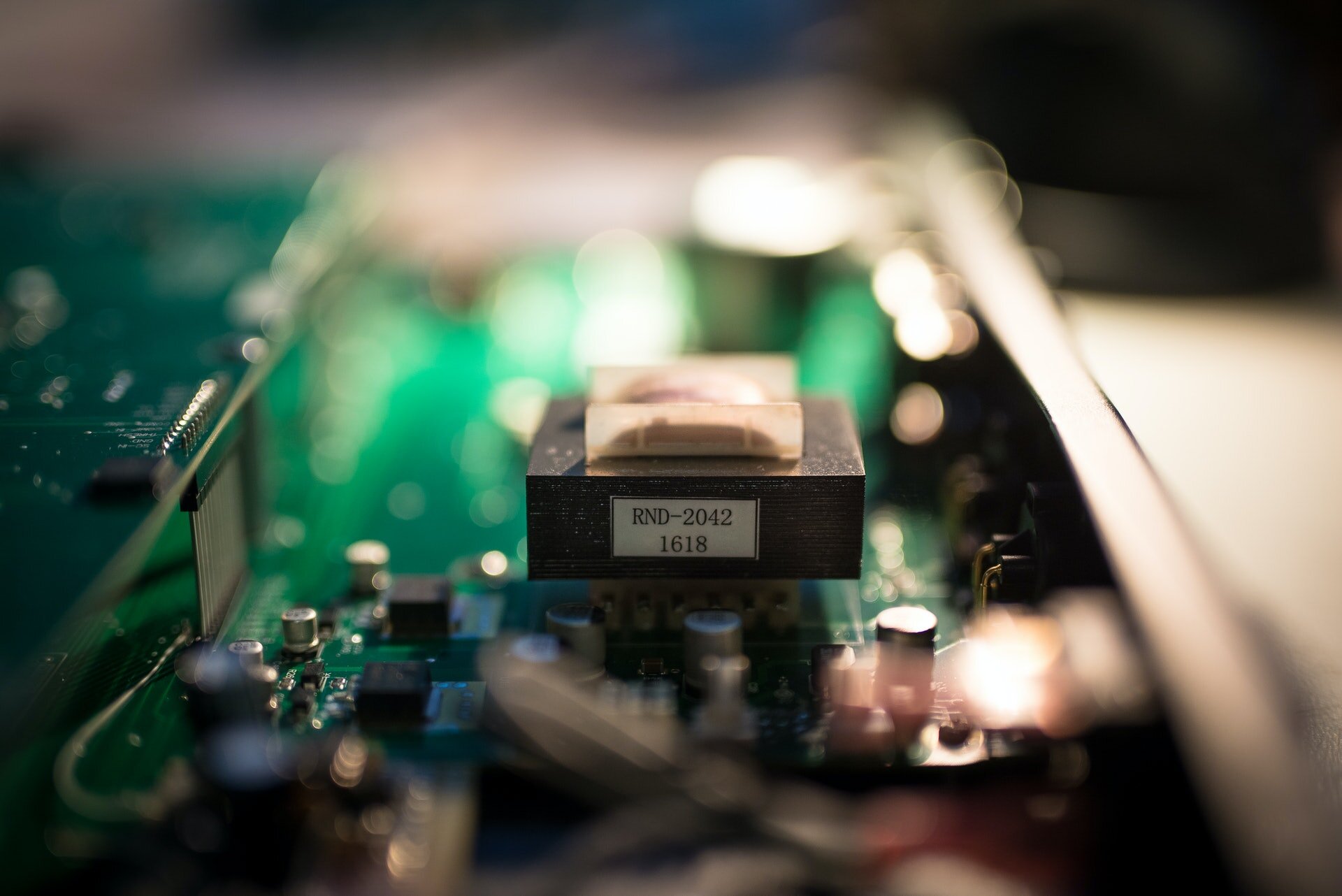
The Dual Output Level Transformers
Complementing the Silk circuit are the custom-designed output transformers, which use Rupert Neve Designs’ distinctive dual output topology. These offer both Main (+26 dBu) and -6dB (+20 dBu) outputs, allowing the engineer to drive the preamps fully into classic transformer saturation without clipping converters and other devices later in the chain.
The main outputs are designed to capture a more pristine sound at high levels, avoiding any nonlinear coloration of the output stage. The -6dB outputs allow an engineer to fully drive the Shelford – adding dynamic tone with these same nonlinear “colorations” – without clipping most professional interfaces. On drums, vocals, guitars and other instruments, these outputs let you easily hit the transformer’s “sweet spot” of nonlinear harmonic content, bringing a recorded performance to life in a way that other preamps simply cannot match.
If you need two channels of the finest microphone preamplification in the world, the Dual Shelford is for you.
Shelford Channel Videos

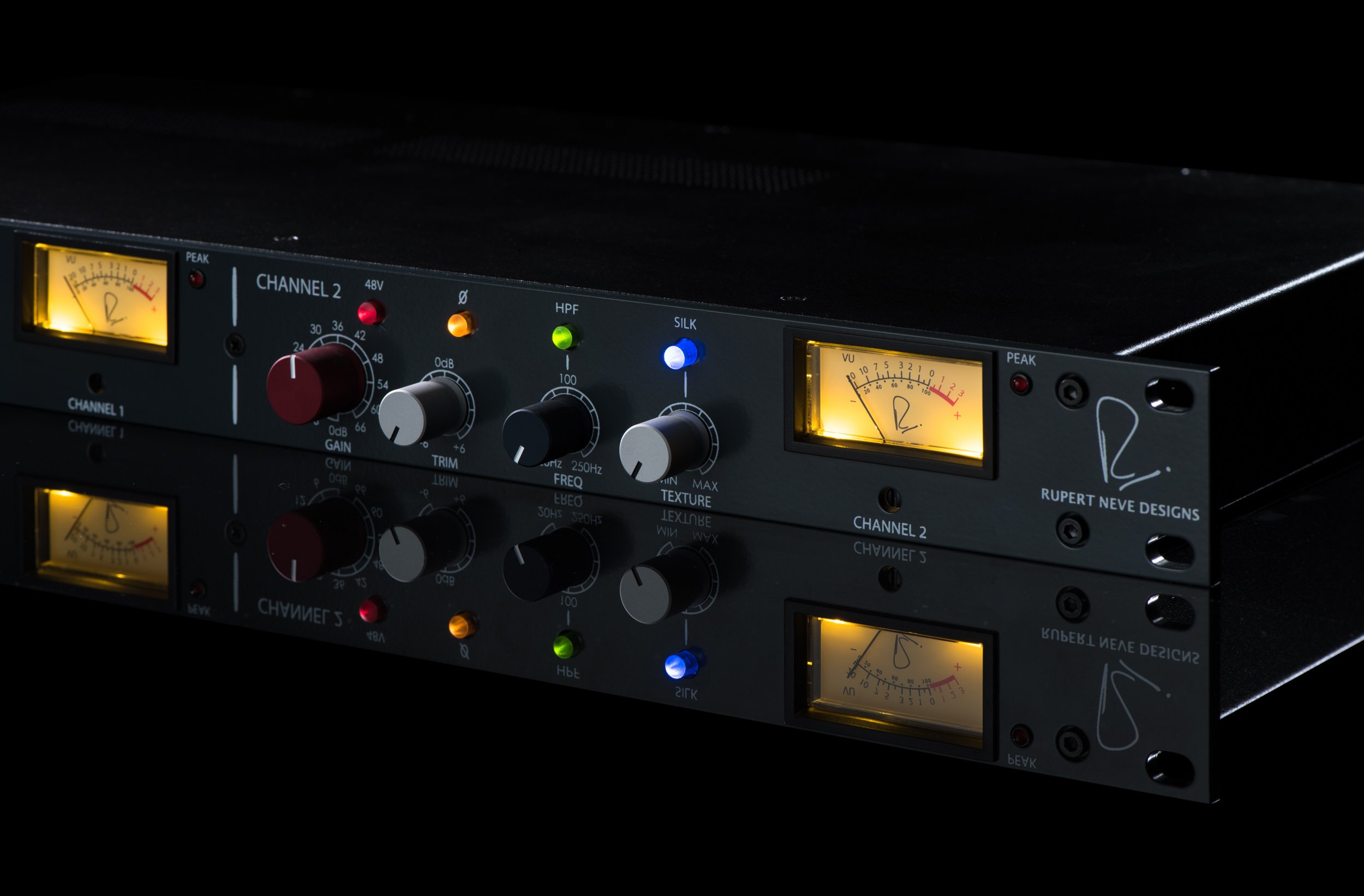



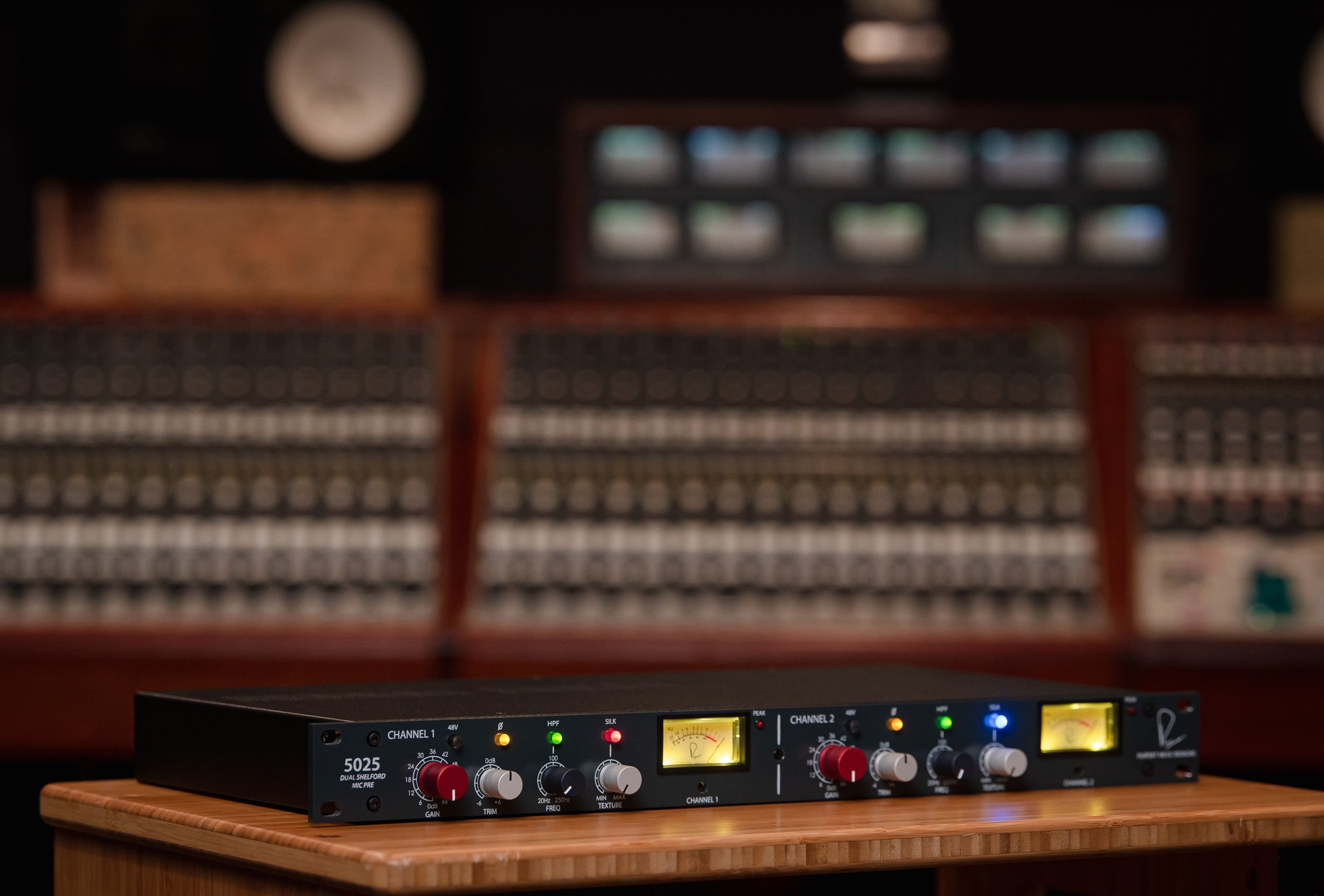
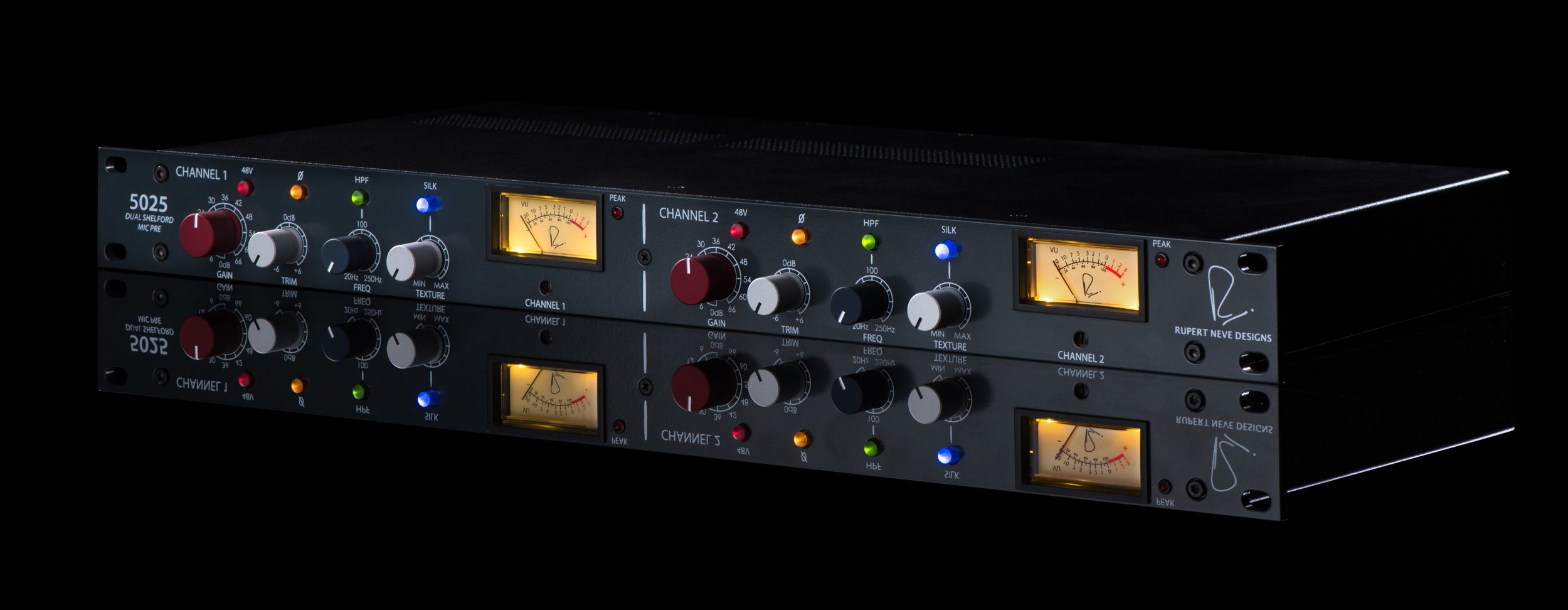
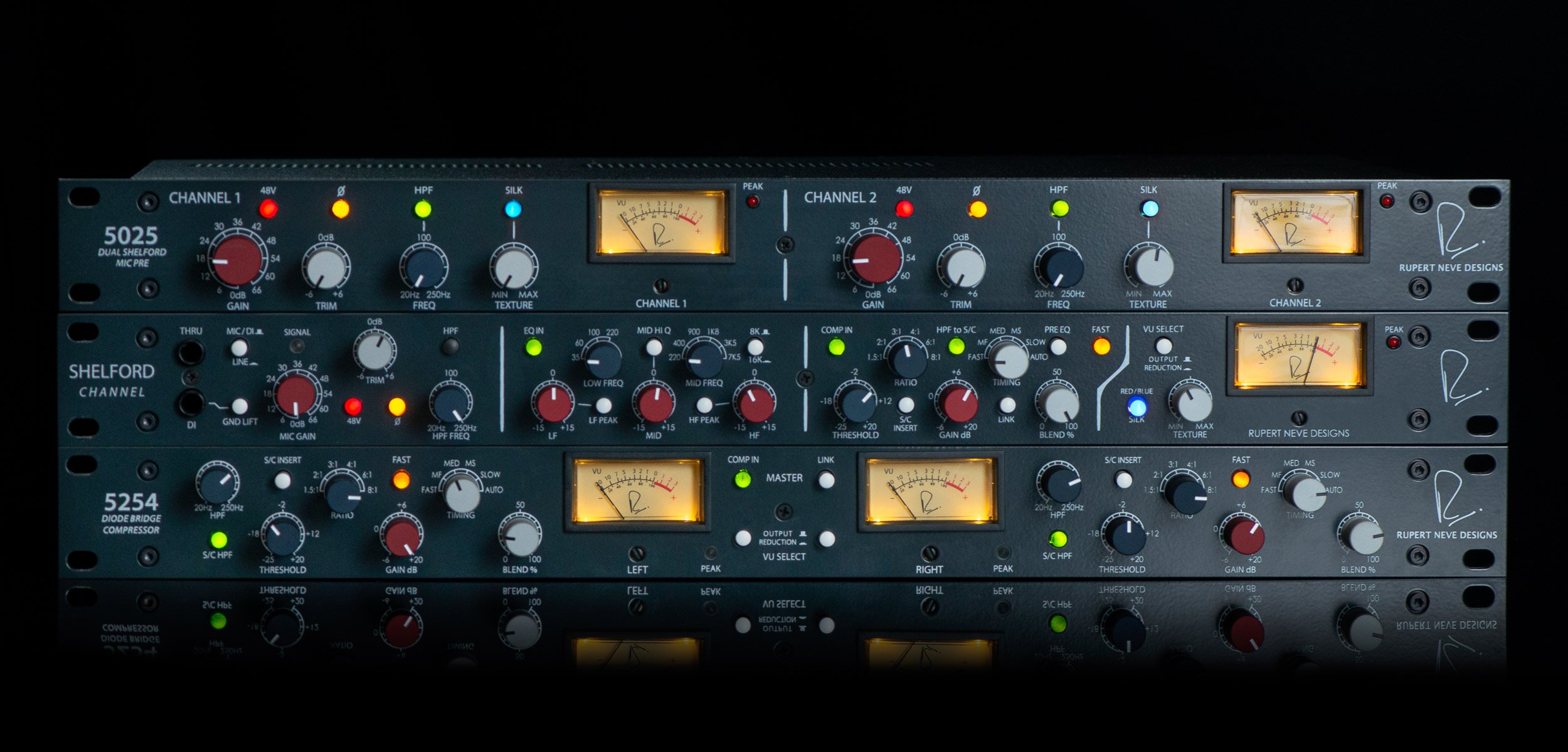

Mic Gain
This 12-way precision rotary switch controls gain from 0 to 66 dB in 6 dB steps.
Trim
This rotary switch provides further continuous gain adjustment over a range of +/– 6 dB.
48V
This push button switch engages phantom power on the microphone input.
Polarity
This push button switch inverts the polarity of the signal path. It illuminates when engaged. (The symbol “Ø” is often used to denote opposite polarity.)
HPF / HPF FREQ
The HPF switch engages a 12dB per octave high pass filter. The HPF FREQ potentiometer is variable from 20Hz to 250Hz, and can be used to filter out unwanted low frequencies, or in conjunction with the EQ to help shape source material. Note that engaging the HPF to S/C switch moves the HPF from the primary signal path to the compressor side-chain signal path.
Silk / Texture
Pushing the Silk button cycles the Silk modes from Red to Blue to OFF. Silk reduces the negative feedback on the output transformer, adding harmonic content as the texture is increased. Red Silk accentuates the musical harmonic saturation from the mid and high frequencies, while Blue Silk accentuates harmonics from the low and low-mid frequencies. By manipulating the Texture control, the amount of Silk can be changed from essentially absent, to roughly 4-5% THD (mostly second order) depending on how hard the output transformer is being driven.
VU Meters
The VU Meters are calibrated to display average (RMS) output levels.
Peak LED
Red indicates near clipping of the output stage.
Dual Tap Output
In addition to the MAIN full-headroom output, the -6dB output creates a rich harmonic character while reducing the risk of clipping the next device in the chain.
Gnd Lift
This switch separates the direct connection from audio signal ground to chassis earth.
Universal IEC Power Input
Works worldwide, accepting voltages from 100-240VAC.
SHELFORD CHANNEL REVIEWS
“I love it, it’s fantastic, and it’s saved my bacon on many occasions.”
Mark ‘Spike’ Stent
Beyoncé, Lady Gaga, Coldplay, Muse
“…just pure glorious sound.”
Tony Visconti
David Bowie, T. Rex
“The 1073 vocal sounded really good, but dare I say, I preferred the sound of the Shelford over the vintage module? Heresy!!! That’s when Sam and I exchanged looks that said, ‘Damn, that thing is killer!’”
Geoff Stanfield / Tape Op Magazine
“I am blown away by the Shelford Channel. Everything about it is amazing, and it is clear that no detail was overlooked. Whether it’s my bass, my drum mics, or a vocal, it is one of those pieces of gear that will get used on a daily basis and stand the test of time.”
Adam Blackstone
Drake, Jay-Z, Nicki Minaj, Eminem, Rihanna
“I’ve always felt that I had to choose between precision and color when deciding which channel strip to go with for a particular task. The Shelfords remove that from the equation as they strike the perfect balance between a crisp, defined sound and colorful, warm tones while still allowing me to tip the balance far in either direction….”
“From pre to silk, every component in the Shelford Channel shines on its own – but when combined in this way, you really have something special. With the Shelfords you’re seeing the sum total of Rupert Neve’s sonic legacy distilled into a single piece, and as an artist it’s truly inspiring.”
Scott Hansen, a.k.a. Tycho
“It sounds like the best aspects of the 1073 and 1066’s. It sounds so familiar and comforting…”
Craig Ross
Patty Griffin, Spoon
“I compared the Shelford Channel to a classic 1066 running into a 2254 compressor and I loved the flexibility of the new design. Well done!”
Joe Baldridge
Keith Urban, Kelly Clarkson
“It’s like a time machine…you can go back and hear what a 1073 actually sounded like when it was new…after working on a vintage Neve console for 10 years, it’s exciting to hear the Shelford sound like a 1073 and 2254 are supposed to, but without all the baggage.”
Mitch Dane
Jars of Clay
“This piece to me just sounds classic. ”
Matt Ross-Spang
Jason Isbell, Margo Price
“You’re going to need two of these. One will not be enough.”
Vance Powell
Jack White, Chris Stapleton

SPECIFICATIONS & DOWNLOADS
All specifications are typical
ZSOURCE = 150 Ω Balanced, 30 ft. XLR cable on specified output
INPUT IMPEDANCE
2.2 kΩ
MAXIMUM INPUT LEVEL
@ 1 kHz: +24.9 dBu
@ 1 kHz (Main Out): +26.7 dBu
@ 1 kHz (-6dB Out): +20.7 dBu
FREQUENCY RESPONSE
20 Hz to 20 kHz: +/-0.25 dB
10 Hz to 62 kHz: +/- 0.5 dB
5 Hz: << -3 dB
70 kHz: -3 dB
THD+N% (BW 10Hz - 90kHz)
0dBu Input, 1 kHz: < 0.0025%
+20dBu Input, 1 kHz: < 0.008%
NOISE AT MAIN OUTPUT (BW 22Hz - 22kHz)
0dB Gain: -102 dBu
+30dB Gain: -94 dBu
+66dB Gain: -61 dBu
EIN (+66dB Gain): -127 dBu
NOISE AT -6dB OUTPUT (BW 22Hz - 22kHz)
0dB Gain: -107 dBu
+30dB Gain: -100 dBu
+66dB Gain: -67 dBu
EIN (+66dB Gain): -133 dBu
PRODUCT DIMENSIONS (W x D x H)
19” (48.3 cm) x 9.2” (23.4 cm) x 1.75” (4.4 cm)
SHIPPING DIMENSIONS (W x D x H)
24” (61 cm) x 13” (33 cm) x 4” (10.2 cm)
SHIPPING WEIGHT
11 lbs. (5 kg)
FREQUENTLY ASKED QUESTIONS
The Shelford Channel and 5025 use a more vintage-style direct-coupled transformer with gain for the mic preamplifier, which has a different impedance characteristic as compared to the electronically balanced inputs of our other mic preamps.
Of importance: while what most people think of as “vintage Rupert Neve preamp tone” is almost entirely derived from the output stage transformer (and is controllable in the Shelford preamps and other modules via Silk / Texture), the direct-coupled input transformer with gain topology does have a somewhat more “mid-focused” quality due to the impedance characteristics in the HF band and saturation effects in the LF band.
Yes! They are isolated from one another and can be used simultaneously.
If you are looking to fully drive the output transformer to impart the non-linear harmonic content that adds dynamic richness to the sound (and you don’t want to clip your converters) the -6dB output is the way to go. If you want maximum headroom, use the main output.




